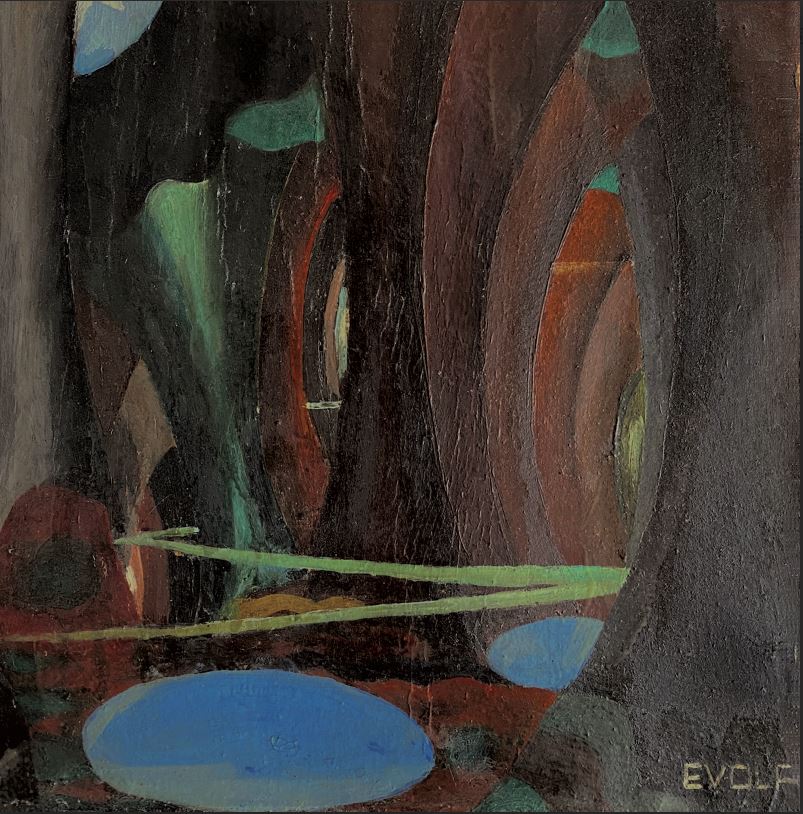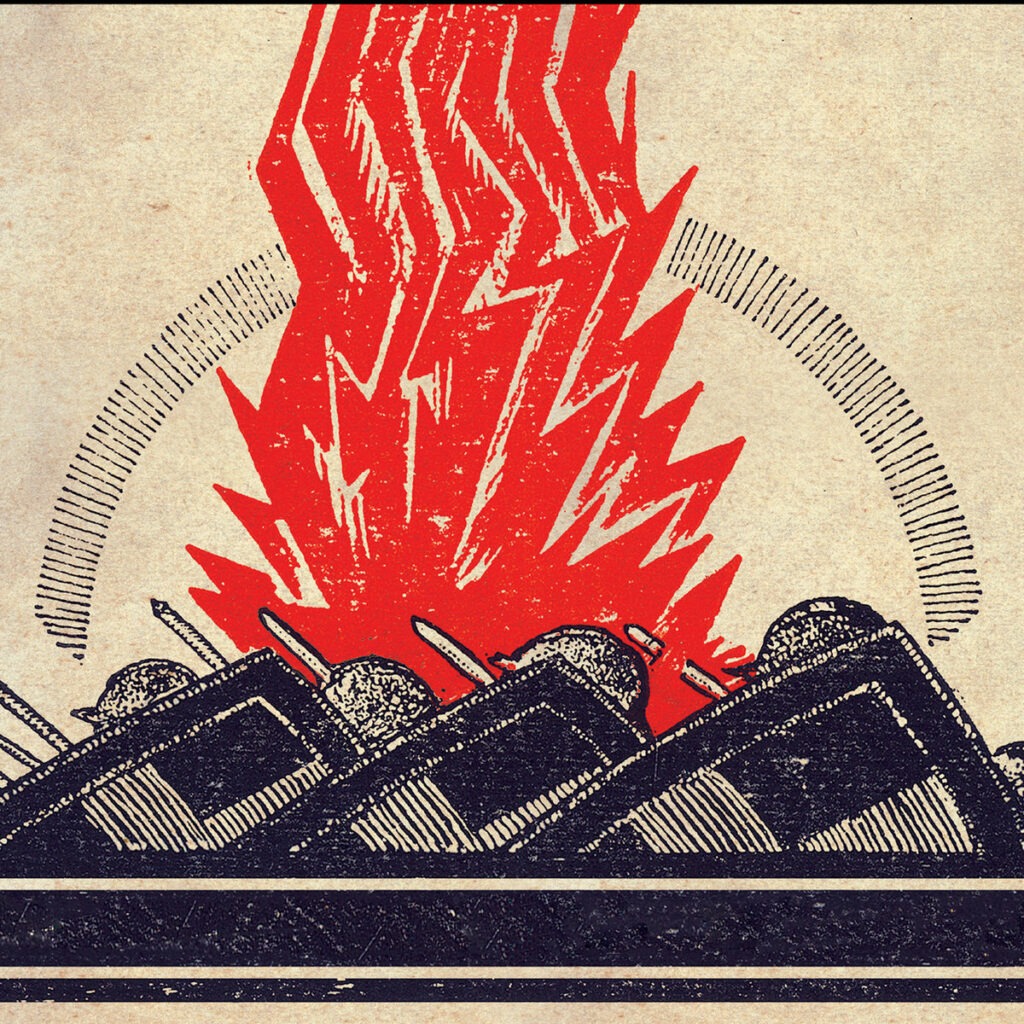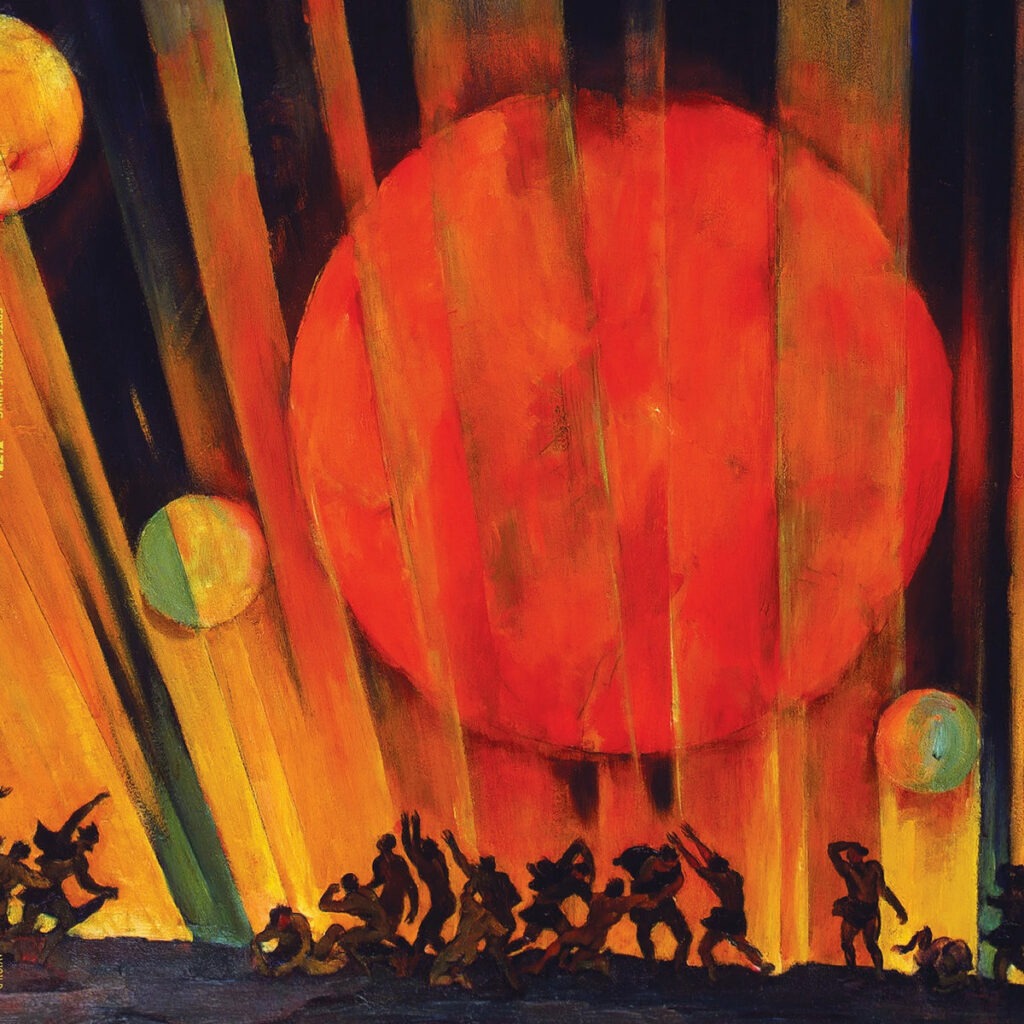Once upon a time in Italy, there was a band called SPITE EXTREME WING. “Once,” as there will not be a second time, nor any other band like this, although their legacy lived on and quite a few acts in the underground metal scene tried to follow their footsteps.
SPITE EXTREME WING was founded in Genoa and was active from 1998 to 2008. Their four albums have been reissued via Dusktone (“Magnificat,” “Non Ducor, Duco,” “Kosmokrator”) and Avantgarde Music (“Ultra”), available starting from April 19th, 2024. The reissues do not have many changes, compared to the original releases, but there are a few details that put the whole initiative in a certain light, such as putting the band’s demo on a different physical CD/vinyl on “Magnificat,” which clearly tells that it is, all in all, a different opus, plus other features such as new cover artwork and deeper insight about the main themes on “Non Ducor, Duco,” among the others. The band’s concept has reached its full achievement with “Ultra,” their closing chapter, an album whose depth and old-school, yet ground-breaking features do make it an unmatched piece of art.

Singer, guitarist, lyricist, and composer Argento has nurtured a feverish passion for local history, traditions, and philosophy since an early age, as well as a boundless love for the Norwegian black metal scene of the ’90s, in particular for DARKTHRONE. The path he has chosen led him back to the origins of the Italian culture, both philosophically and anthropologically, as multilayered and complex as it can be; he was deeply inspired by the ancient Roman religion, as well as some specific philosophers and historical events. With SPITE EXTREME WING he successfully managed to conjugate a peculiar black metal sound with a tasteful and sensitive approach to the above-mentioned themes, which soon became a staple in his lyrics and do make the band quite different if compared to many other acts in the Italian scene who rather took inspiration from tales and settings quite far from their environment and traditions, both physically and culturally.
Argento does not have a classical education background (there is a specific kind of high school in Italy where Latin and ancient Greek are taught for five years, as well as a focus on history and philosophy), hence his interest stems from a genuine passion which, in my opinion, sounds impressive, considering the high quality of his lyrics also in terms of aesthetic taste, as well as some peculiar choices in terms of the locations where the albums have been recorded, in order to give them a unique and primordial touch, in tune, once again, with the concept in its complexity.
It is also worthwhile to point out that SPITE EXTREME WING have been mentioned in POSEIDON’s debut album review, as the two projects are intertwined since they share two band members, but also the foundational concept which sees music as a means of self-knowledge, but I will expand on this topic in due course.
“Magnificat” was originally released in 2003 via Beyond Productions and it collects the outcome of four different recording sessions which took place between 1999 and 2002. The band’s first demo has been placed on a separate physical record labeled as “disc two – demo 1999” in the reissue. Right after recording that demo, the band played a couple of live shows, the only ones in their career. One specific feature that is worth clarifying is that, unlike their following production, which will be exclusively in Italian, the songs on the demo are in English and do sound like uncompromising black metal heavily inspired by a bunch of well-known Scandinavian bands. At that time it was already clear, though, that bassist Azoth did think “outside the box,” as his specific approach was absolutely essential in terms of how the musical identity of the band would turn out since that very moment, as his style does really elevate the role of the bass. That feature says a lot also about the relationship between Azoth and Argento as friends and bandmates: their deep connection, both on a spiritual and musical level, is one of the main ingredients that made SPITE EXTREME WING such a one-of-a-kind band. Azoth has been covering keyboard duties as well. “Magnificat” includes the EP “Arcano Incanto,” which dates to 2002. The drummer was, for all the four sessions, Fog.

Musically speaking, a hint of a more personal and original approach is already detectable, not only because of the use of their mother language but also in terms of the overall sound and atmosphere, which reflects the source of inspiration of the opus: L’Arcano incantatore [Eng. Arcane Sorcerer], a movie by the Italian director Pupi Avati infused with esotericism in a rural environment during the 16th century. Watching that movie had a huge impact on Argento due to its atmosphere, cloaked in a magical, sacred aura, as much as “Magnificat,” another movie by the very same director, set in Medieval times, whose name ended up being the title of his first opus with SPITE EXTREME WING. The other two sessions gathered in the album date to 2001 and 2002 and include some experiments in phonetics, such as “Lotusblüten I,” which sees Void as a guest vocalist. As mentioned in the review of POSEIDON, he happens to be a good friend of the band members, and his presence on the track provides an unexpected extra kick in terms of brutality.
It is for me crucial to point out, once again, how rich and culturally valuable the sources of inspiration that worked on the authors’ minds and souls are, in a music genre where, it has to be said, the topics are often quite shallow, vulgar, and displayed in a uselessly emphatic manner.
The second album saw the light in 2004. There was a change in the lineup, as Fog was replaced by Rigel. “Non Ducor, Duco” is, in all respects, a game-changer in SPITE EXTREME WING’s history as a band, as well as individuals, but also in the Italian black metal history. The concept is quite complex and not that easy to convey to a non-Italian audience, but I will do my best to summarize its poignant matters in a functional way.
“Non Ducor, Duco” sees the consolidation of two important aspects of the band’s identity: the lyrics in Italian and the use of natural reverberations. According to Argento, a place carries and conveys a symbolical power and meaning, which affects the sound through a specific kind of natural reverberation. Black metal as a genre does fit in such a perspective, as that reverberation speaks – literally – for itself and, in a way, gives the sound an uncategorizable feature, making the music impossible to cage into a specific style of production, or set in a specific decade in a sense that every album sounds similar to each other, as this is exactly what Argento and his bandmates wanted to avoid. Moreover, those natural reverberations are impossible to control or tame, adding an almost magical and mystical vibe to the whole experience. It is exactly what happened at Forte Geremia, a military fortification built in the 19th century located in the Ligurian mountains, a place extremely isolated and evocative by itself. The guys from SPITE EXTREME WING found it the perfect location to let their music take its shape, embracing any possible unforeseen event that occurred during the process. Recording an album in such an unconventional place eventually made the outcome sound eternal, boundless, open, and free, far from any standard procedure, all features that pair perfectly with the solemnity and the depth of the concept.
The title, which can be roughly translated as “I am not led, I lead,” is a clear reference to the legionnaires of Fiume and their quest, which was led by Italian poet and patriot Gabriele D’Annunzio in 1919, a theme very dear to Argento and his bandmates, as they developed it also on a metaphorical and symbolic level.
Julius Evola, the Italian philosopher’s thoughts and writings are the main sources of inspiration for the opus, and the themes range from the realization of oneself through action, to an inner ascetic journey that sees the surpassing of God as a necessary phase to get to the above-mentioned self-realization, to a heartfelt and meaningful homage to a very specific historical fact that I will deepen in a while. The clever use of symbols such as the tower, the sun, and the peak gives a quite clear idea of how deeply these topics have grown on Argento and how spontaneous and effective his abilities are to convey this huge amount of information in the form of thoughts and emotions. In his own words: “According to both Eastern and Western metaphysics, the human being as an entity can either evolve or dissolve oneself. Self-realization occurs through an ascetic-contemplative path, or through action in a heroic way of life, in which war must be taken also in its symbolical meaning and as an internal war, so to speak. Mountain climbing is to be considered as an intermediate phase, again, also in its symbolical meaning, a topic widely debated by Evola and briefly illustrated on the third track “In su la Vetta” [Eng. “Upon the Peak”]. Reaching the peak leads to, we could say, an active contemplation. However, all these paths and phases must be navigable also in the so-called “Kali Yuga” which, according to Hinduism, is the world age we live in, the shortest and the worst one, an age of dissolution and decadence. Most of the concepts explained in the album come from Evola’s opus Revolt against the Modern World, a must-read for anyone who wants to dig deeper into those themes.”
Music plays, of course, a big role and makes it possible to experience the whole thing despite any language barrier: the poignant, glacial, martial, uncompromising, and expressive guitar work, along with skillful and versatile drumming, and the dramatic bass and keys parts provided by Azoth do make “Non Ducor, Duco” a full-fledged manifesto, as unique and fundamental as it can be to better understand the band, the genre, and last but not least, oneself. Argento’s chant does really convey the visceral passion he has been feeding for those topics, as well as for music as a self-knowledge tool. It is quite hard to choose one or two particularly representative songs on the album, as it is a journey, and all the steps must be followed in that specific order, but I would choose the instrumental tune “Decadenza” because of its ghastly atmosphere and background story (the so-called “Viennese incident,” a bombardment occurred in the Austrian capital on January 21st, 1945, due to which Evola has lost the use of his lower limbs), giving an incredibly powerful outcome as a result.
“Decadenza” is a 6-minute compelling example of how evocative and effective music by itself can be in delivering a message. It was the very last tune they recorded at Forte Geremia, and it carries a massive melancholic vibe given by the clean-picked guitar section, enhanced by one of the most expressive basslines I have ever listened to, that to my ears almost resembles a human lament. The sound of the bombardments adds further pathos, as much as the piano in the second part of the song.
The cover artwork on this renewed edition on vinyl is a painting by Julius Evola titled In the Woods (Forest), which dates to 1916-1918 and, stylistically, is somewhere in between Futurism and Dadaism. It was part of an art exhibition titled Julius Evola and Spirituality in Art, held in Italy a few years ago; that painting really struck Argento, so he eventually chose it as the cover artwork for his renewed opus, twenty years after the album was originally released.

The CD version displays a new cover artwork, too, and it is a picture of him with a knife in his mouth, whose symbolical meaning leads to sacrifice and instinct. The picture, taken by Lucio Basadonne, dates back to the time when the album was published. It is quite interesting indeed to see how such a pivotal album underwent such variations in the most natural way as if those elements were already there, but now it is the right time for them to be unveiled. “Non Ducor, Duco” is, all in all, an opus that changed the history of SPITE EXTREME WING for good, as well as the lives of anyone who approached it with an open mind and spirit, and I am legitimately eager to see what will happen with this critical reissue.

The following album, “Kosmokrator (Magnificat II),” was published in 2005 via Behemoth Productions. As explicitly stated in the booklet, it was not the latest album by SPITE EXTREME WING, but rather a collection of songs dating back to a period that goes from 1995 (so even before the band was officially formed) to 2000. Those songs have never been recorded before and took their shape in a way that merges the band’s older tracks in a renewed approach referable to what they have done with “Non Ducor, Duco.”
“Kosmokrator” was, in fact, recorded in a Romanesque-Gothic church built in the 12th century, to make the most out of the natural reverberations given by those ancient stone walls as an integral part of the outcome. It sees Fog back on drums and, as pointed out in the booklet, no triggers have been used.
One of the themes is the cult of Mithra or “Mithraism,” an ancient Roman religion based on initiation, but also esotericism from a traditional and rural perspective, in connection with the topics developed in “Magnificat.”

“Fortuna Imperatrix Mundi” from Carmina Burana, the famous manuscript of poems and texts from the 11th-12th century, has been chosen as the first track on the album and does work in terms of preparing the listener for the solemn, monumental, and weirdly sacred music that will follow. “Il Tempio ad Est” was originally composed for a thrash metal band Argento was involved in, and it is pretty clear if we consider the main riff, but the tune itself evolves into a more complex and black metal piece in its middle part without losing its thrashy vibe. It is the only track whose lyrics were included in the booklet and it is inspired by alchemical symbolism. As for the title track, I have always thought that it is one of the most representative tunes in their entire production, and, fun fact, it is among the first ones they have ever written. It is influenced by Scandinavian black metal from the early ‘90s (fast-paced drums, furious riffing, tight metrics), but it is also infused with a distinctive touch of elegance that is an essential part of their trademark sound. “Deo Soli Invicto” shows similar features, along with a slower pace at times, and it does really sound like an incredibly intense invocation to the Sun in its symbolic, deep, vital meaning. With “Vultus” (a Latin word that approximately stands for “face” or “expression”) a completely different side of the band is revealed: this acoustic tune has an ancient, sacred flavor that takes me off guard every time, and it is a “tangible” proof of how wide and unpredictable the band’s creativity is. The ancient stone walls were “singing” along with them also on “Monumentum,” where the absence of vocals makes the tune gain some eerie, otherworldly nuances and, once again, Azoth leaves a mark with his strong presence. “Clermont,” which is, as much as “Kosmokrator,” one of the first songs the band has written, takes the listener back to traditional and uncompromising black metal territories, on the other hand, the closing tune “Il Volo del Bicorne” is a remake of “Viaggio di Ritorno,” (originally released on “Magnificat”) at the hands of their friend Morgan Bellini, who had previously taken care of the mixing phase of “Non Ducor, Duco.” The track can be labeled as “ambient,” but it also carries a heavy, martial, ceremonial vibe that is not unlike the essential elements of black metal.
“Kosmokrator” is, to all respects, a non-homogeneous album due to its generative process in the first place, but I would rather consider it as a point of strength, as it shows how vast and persistent the band’s willingness is to explore their inner world and the concept of nativeness in all its aspects and shapes: as stated in the booklet, “originality is not as significant as Originarity.”
This journey is drawing to a close. SPITE EXTREME WING’s last work “Ultra” is in my opinion one of the finest black metal albums released in the past twenty years and one of my all-time favorites, so I openly admit that it is no easy task to write about it in a detached and objective way, but I will definitely try to convey through words as much as I can.
“Ultra” was published on April 25th, 2008, via Avantgarde Music. It sees the entry of Francesco La Rosa on drums, who had worked on the previous release “Kosmokrator” as a sound engineer. Unlike the latest two albums, “Ultra” was recorded in a regular studio, but Argento and Azoth decided to give the opus a personal, unconventional twist by using vintage equipment that dated to the ‘60s and ‘70s. A bold move, if the average black metal productions from the early 2000s are taken into consideration, and a choice that reflects once again how unique SPITE EXTREME WING are as a band, both in terms of form and content.

“Ultra” speaks loud for itself starting from its title: it is with full intention their closing chapter, as they pushed their message to its limits, and they went even further, to some extent. This album has the power to reveal an unexpected truth to the listeners, I would say in a magical-therapeutic manner that was already part of the POSEIDON opus, originally composed in 2006 and released as late as 2023.
Ulysses can be considered the central character of this journey, a well-known heroic figure torn between “curiositas” and “hybris,” which stand for “curiosity” and “outrage” in their original meanings which look back to ancient Greek culture.
An interesting feature in “Ultra” is the use of Roman numerals in place of the song titles, which kind of enhances the journey-like, step-by-step feeling one gets during the listening, and highlights the reasoned choice to avoid any specific narrative framework, at first sight. Argento speaks to his audience in a more engaging way, he addresses the listeners and guides them through a path in which they can identify with the narrator. He often switches from first-person singular to second, as if the lyrics were a full-fledged speech and both parts are actively participating. It feels like that indeed, as the listening experience really leaves its mark: diving into “Ultra” transforms the listeners for good, as much as exploring unknown places could do.
The opening tune features an ethnic Sardinian choir, which leads to an aggressive yet classy instrumental intro. The second track, it shows a crucial notion regarding the journey in its symbolic meaning through tradition: “I am traveling backwards to go back ahead,” as difficult as it can be to translate it properly. “Move back to move forward” kind of works as well. The emotional drive given by the tune goes beyond any possible language barrier, and I would use the same words to describe the third track as well, whose lyrics are so strongly descriptive that it almost feels like the listener can actually see the overwhelming starry sky while lying on a bare rock…
There is a prominent melodic and rock-oriented vibe that makes “Ultra” quite different from any other black metal album of that time, leading to a “hate it or love it” reaction in the audience, which again, totally reflects the proudly displayed uniqueness of the band’s production. “Ultra” can boldly be considered a rock’n’roll album played with a black metal attitude, or the other way around. Both visions are valid. The use of vintage instruments, such as mellotron, in an extreme metal/punkish environment took many people off guard, back then, but in my humble opinion, it is just one of the many features that do make “Ultra” so important, special, not for everyone, and a necessarily ground-breaking opus in black metal and music history.
Its richness also lies in the many and various references to ancient literature and history, from Commentary to the Dream of Scipio by Macrobius (which refers to Somnium Scipionis by Cicero) on “III,” to the battle of Gorizia on “V,” to name a few. Moreover, the richness in atmosphere on track 5 proves the band’s mastery in gathering different moods and styles on the same song, in a seamless, intense, and touching multi-flavored journey.
It really feels like Argento has found his true self in these ancient tales and historical facts, and he manages to convey his burning, growing passion through his compelling chant. Azoth and F. La Rosa provide a solid structure to the whole thing, proving to be one of the best rhythmic sections one could ever wish to see in such a band. From uncompromising blast beats to relatively softer rockish patterns with proggy vibes, to punkish hints here and there (track 4, for instance, was inspired by MISFITS’ “Devilock” and sees Il Colonnello from FRANGAR as a main vocalist), “Ultra” is shamelessly bold in going beyond any possible line or border of the genre. The seventh track, inspired by Martianus Capella‘s “De Nuptiis Philologiae et Mercurii” has led to the band’s only video clip, “Collective Unconscious,” an enigmatic and compelling opus directed by Lucio Basadonne.
One track that has been mentioned on POSEIDON’s album review, “VIII,” inspired by the legend of the Flying Dutchman, sees Algol from FORGOTTEN TOMB on vocals. His spoken-word delivery, in poetic Italian, sets a quite drastic change in the mood: solemn, classy, as dark as the abyss the lyrics tell about. As stated, the song dates to 2006 and shows a distinctive neofolk vibe and a dream-like aftertaste that fits in a weird yet appropriate way in the context. There are also quotes from Virgil and Ovid in Latin on “IX,” which combined form a quite powerful statement about how everything changes, nothing really dies, love conquers all and we surrender to it.
The closure is, once again, daring and unexpected: “X” is a cover version of THE BEATLES’ legendary song “Helter Skelter,” which sees Herr Morbid from FORGOTTEN TOMB as a singer. One golden rule about cover songs is, in my opinion, reaching a balance between the original version and the band’s personality. SPITE EXTREME WING totally nailed it: as different as these two worlds might seem, “X” embraces both, getting the best out of them. Herr Morbid’s chant sounds energetic, confident, infused with a positive and light-hearted attitude none would have expected from him, at least back in those days, but that proves how versatile and boundless his talent and sensibility as a musician are. Honestly, I cannot imagine anyone else singing such a cover version as he did, and I am grateful to the band members for their unquestionable courage. As for the music, the vintage vibe is massive and well counterbalanced with the band’s trademark sound and their unique approach to black metal, which makes “X” more than a simple cover song. It is the closing chapter of the band’s career, so it surely has a big role in leaving a good memory in the listeners’ hearts, and it did not fail.
The journey is done, and I hope my many words have spiked some curiosity in the readers. There will not be any other band like SPITE EXTREME WING, and at this point, I would rather let their four albums speak for themselves. Each album is a world on its own, which carries meanings, memories, and a specific worldview, as they serve as a mirror that reflects both the creators’ deepest essence, and the listeners’ hidden sides, which can be seen and fully understood with the precious help of those who make of music an insightful mean. My deepest and eternal gratitude goes to SPITE EXTREME WING, for carrying the torch.
Labels
Dusktone
Avantgarde Music





